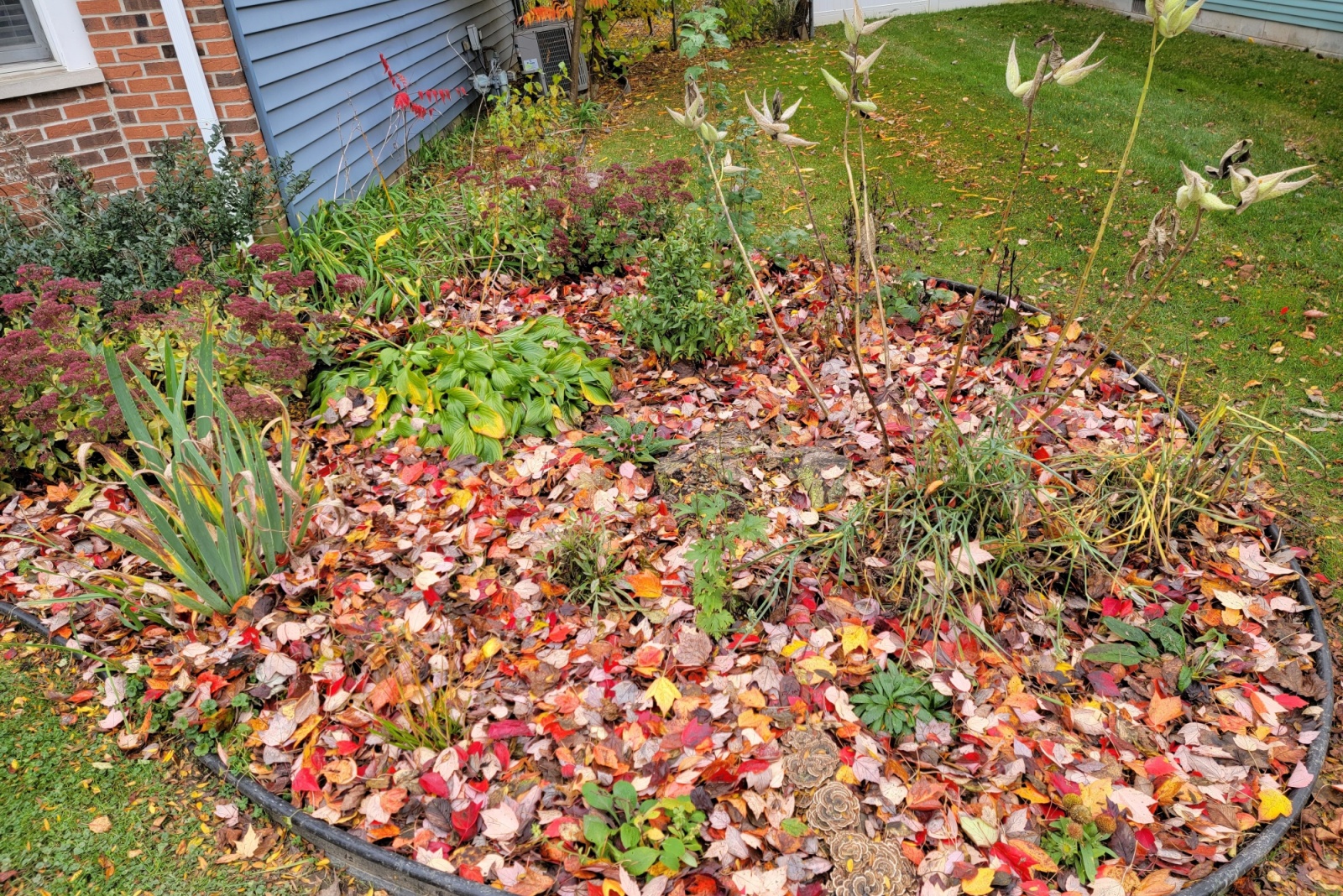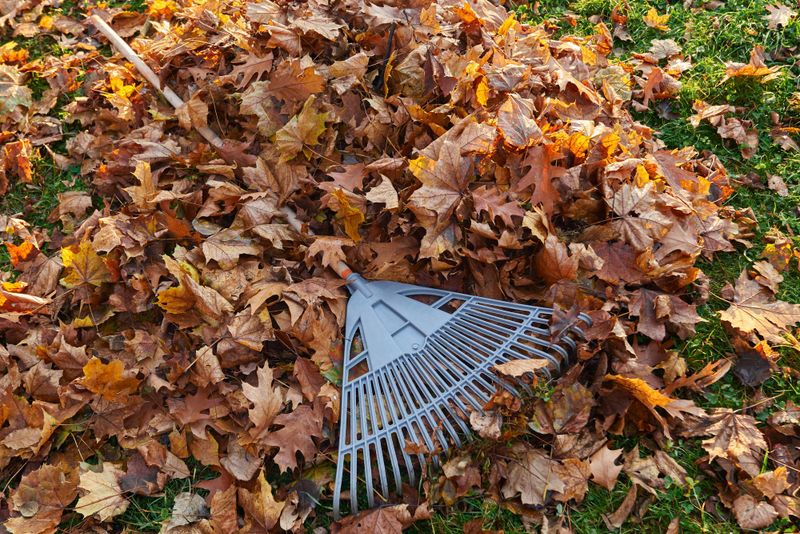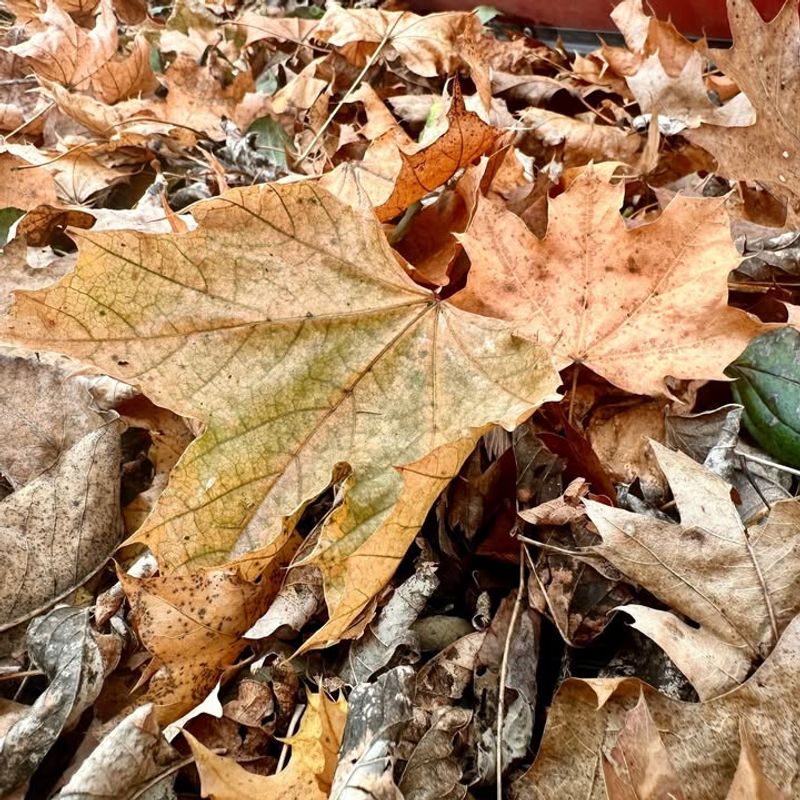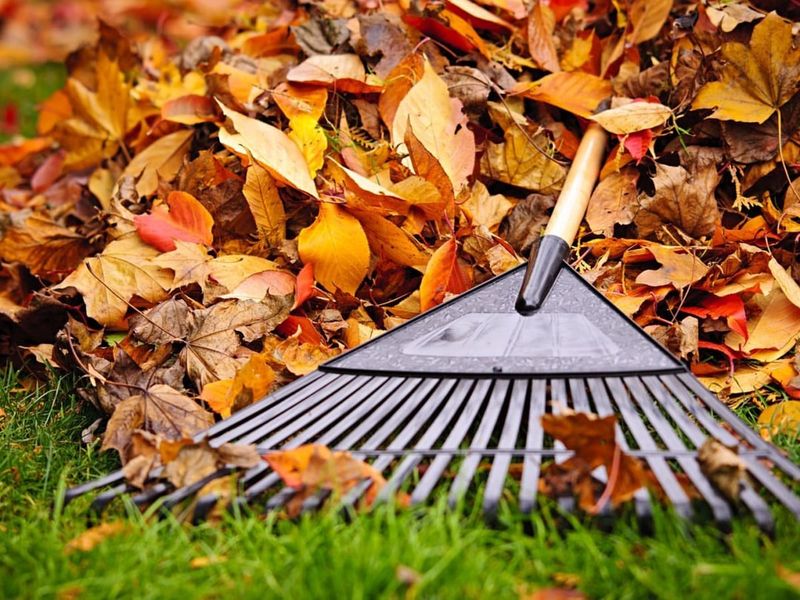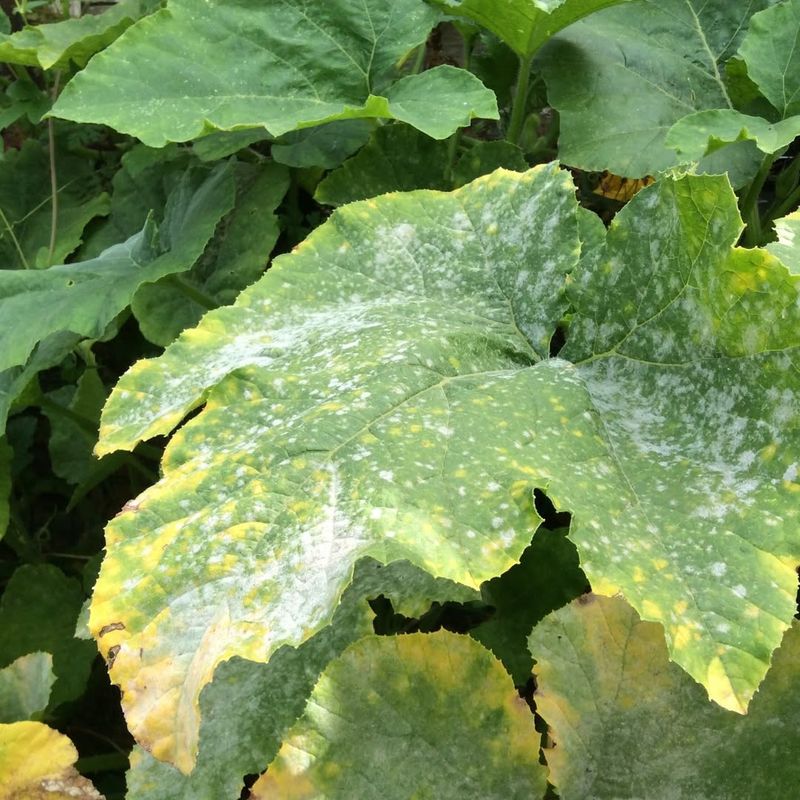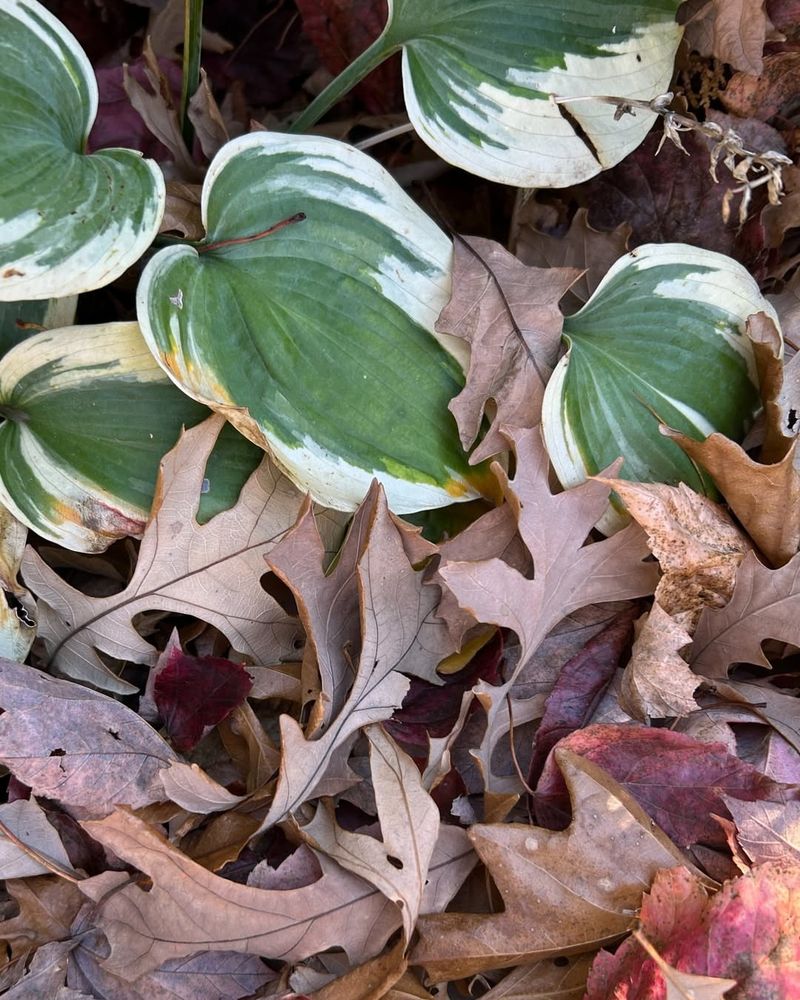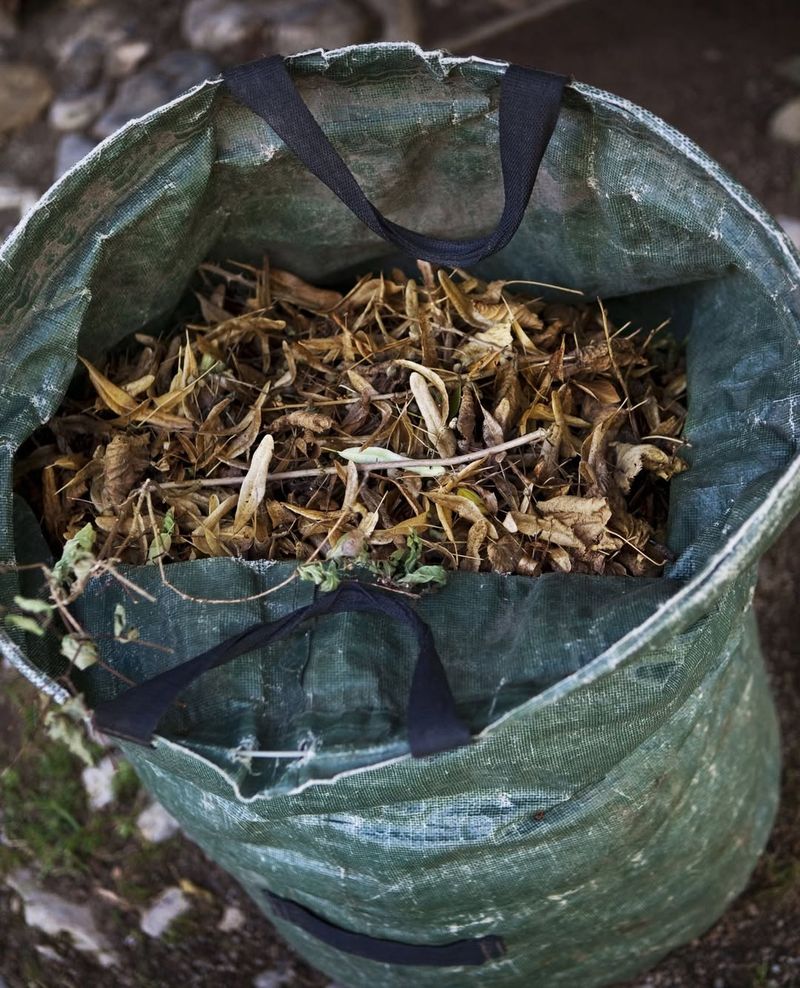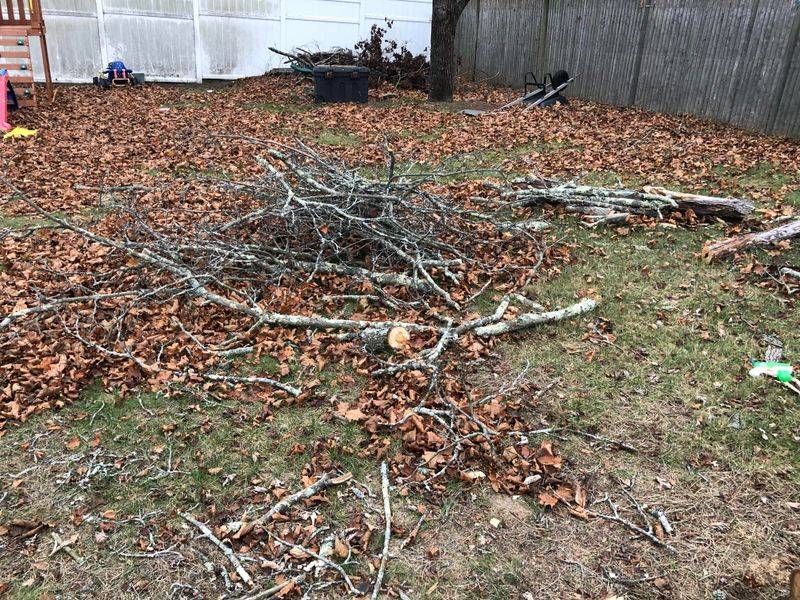Fall in Michigan brings beautiful colors and lots of leaves dropping from trees. Many gardeners wonder if they should leave those leaves on their flower beds or rake them away.
Making the right choice can help your plants stay healthy through winter and thrive when spring arrives.
1. Thick Leaf Layers Can Smother Your Plants
A heavy blanket of leaves might seem cozy, but it can actually suffocate your Michigan perennials and bulbs. When leaves pile up too thick, they block air and light from reaching the soil and plant crowns.
Your flowers need to breathe even during their dormant period. Matted, wet leaves create a barrier that traps too much moisture and prevents proper air circulation.
Keep leaf layers to about two or three inches maximum to protect without smothering.
2. Some Leaves Break Down Faster Than Others
Not all leaves decompose at the same speed in your garden beds. Maple and birch leaves are thin and break down quickly, enriching your soil by spring. Oak leaves, however, are tougher and take much longer to decompose.
If you have mostly oak trees, consider shredding those leaves first before spreading them on beds. Smaller pieces break down faster and create better mulch.
Mixing different leaf types helps balance decomposition rates nicely.
3. Pests Love To Hide In Leaf Piles
Insects and small rodents see leaf-covered beds as perfect winter hotels. Slugs, snails, and various beetles often burrow into leaf litter to wait out Michigan’s cold months. Mice and voles also enjoy nesting in thick leaf layers.
While some beneficial insects use leaves too, problem pests can multiply and damage plants come spring. Check your beds occasionally during fall and winter.
Remove leaves near vulnerable plants if you notice pest activity increasing.
4. Wet Leaves Can Cause Fungal Diseases
Michigan’s fall weather brings plenty of rain, and wet leaves pressed against plant stems spell trouble. Constant moisture creates the perfect environment for mold, mildew, and fungal diseases to develop. Your perennials become vulnerable when sitting under soggy leaf blankets for weeks.
Black spot, powdery mildew, and root rot thrive in these damp conditions. Pull leaves back from plant crowns to allow better airflow.
Check beds after heavy rains and fluff up compacted leaves.
5. Leaves Provide Valuable Winter Insulation
Despite potential problems, leaves offer excellent protection for your flower beds during harsh Michigan winters. A moderate layer acts like a natural blanket, keeping soil temperatures more stable and protecting plant roots from freeze-thaw cycles.
This insulation helps perennials and bulbs survive bitter cold snaps. The leaves also prevent soil erosion from winter winds and early spring rains.
Applied correctly, leaf mulch saves plants and reduces spring cleanup work significantly.
6. Shredded Leaves Work Better Than Whole Ones
Running your mower over leaves before spreading them on beds makes a huge difference. Shredded leaves settle better, decompose faster, and won’t mat down into impenetrable layers like whole leaves do.
Smaller pieces allow water and air to flow through while still providing protection. They also look neater and more intentional in your landscape.
A mulching mower makes this job quick and easy every fall weekend.
7. Spring Cleanup Timing Matters For Success
Knowing when to remove fall leaves in spring is just as important as putting them down. Wait too long and emerging shoots struggle to push through, or fungal problems develop in warming weather.
Remove or rake back leaves when you see new green growth starting to appear, usually mid-March to early April in Michigan. Leave some shredded material to continue decomposing.
Early spring cleanup gives plants room to grow while maintaining soil benefits.

